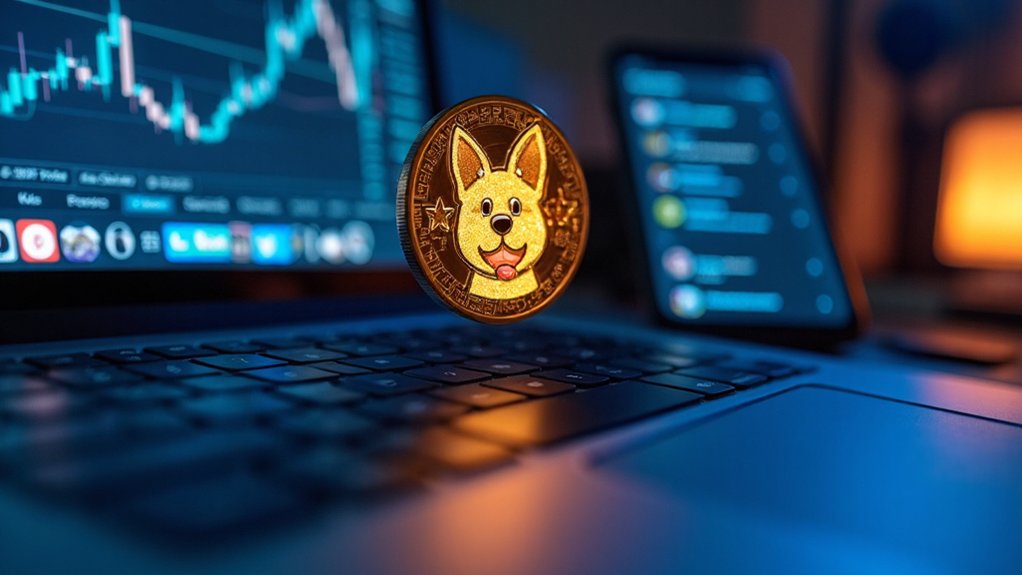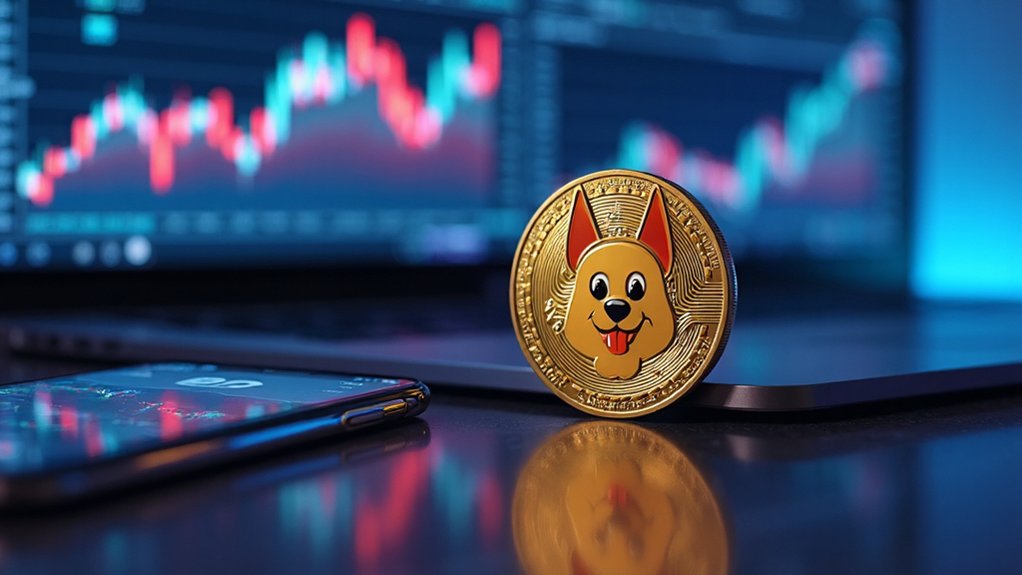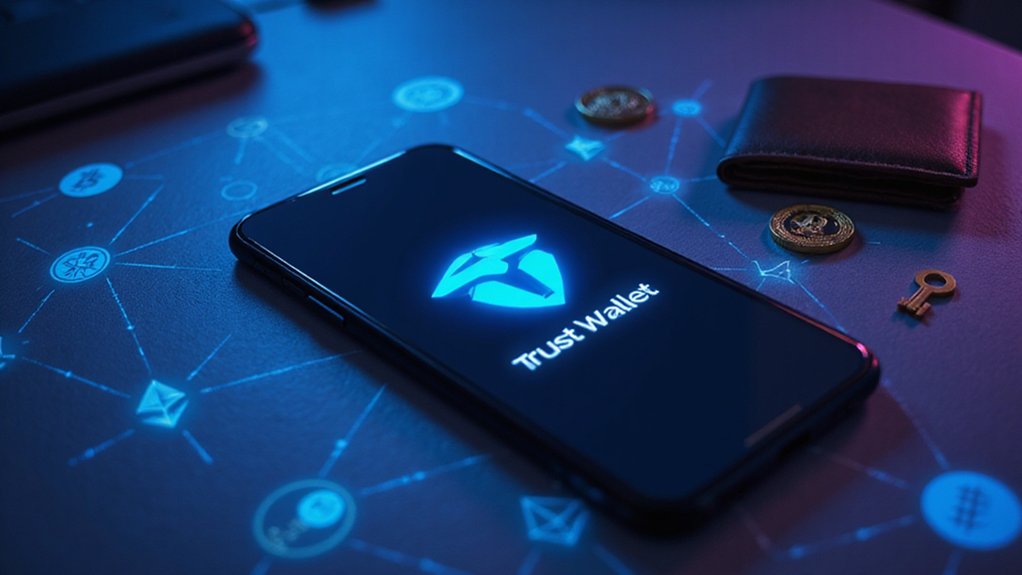Creating a meme coin requires selecting a culturally resonant theme, developing a cohesive brand identity with an eye-catching logo, and establishing tokenomics that favor psychological appeal (think trillions in supply). Technical implementation has been democratized through blockchain platforms requiring minimal programming expertise. Success hinges on leveraging social media platforms, engaging mid-tier influencers, and nurturing a self-sustaining community through shareable content and strategic partnerships. The alchemy of transforming internet humor into speculative assets awaits those prepared for financial absurdity’s logical conclusion.

Why have traditional investment vehicles become passé when internet-driven financial phenomena offer unprecedented opportunities for viral wealth creation?
The proliferation of meme coins—those peculiar digital assets predicated on internet humor rather than fundamental value—demonstrates the remarkable elasticity of modern financial markets.
Meme coins represent financial alchemy—transforming internet jokes into speculative assets through market elasticity previously thought impossible.
Creating such a coin begins with the selection of a resonant theme that captures the zeitgeist of internet culture, followed by development of a cohesive brand identity (complete with an instantly recognizable logo) that can propagate across digital ecosystems with minimal friction.
Market research constitutes an essential preliminary step; successful meme coins invariably align with trending cultural phenomena.
Competitive analysis of extant meme currencies provides invaluable insights regarding tokenomics, community-building strategies, and potential pitfalls.
The establishment of a consistent visual identity across platforms—coupled with a compelling narrative that transcends mere financial speculation—creates the foundation upon which viral success might be constructed.
Effective meme coin promotion leverages social media platforms where memetic content thrives.
Twitter, Reddit, and TikTok serve as primary vectors for dissemination, with mid-tier influencers often providing superior engagement relative to their more prominent counterparts¹.
Content strategy should prioritize shareable, humorous material that encourages community participation through user-generated content—a self-perpetuating cycle of promotion that deftly circumvents traditional marketing expenditures.
Community management proves critical; experienced moderators who understand the delicate balance between authentic engagement and promotional objectives can nurture the fledgling community.
Strategic partnerships with complementary projects and well-timed exchange listings maintain momentum beyond the initial launch phase.
The integration of novel elements—NFT collections, token burns, or staking mechanisms—sustains investor interest despite inevitable market volatility.
The astute creator recognizes that a meme coin’s ultimate value proposition lies not in technological innovation but in its capacity to catalyze community formation around shared cultural references.
Modern tools have democratized the process, allowing creators to launch tokens without extensive programming knowledge while still maintaining the technical fundamentals required for market viability.
In an age where attention constitutes the scarcest resource, meme coins represent the curious intersection of finance and entertainment—a peculiar alchemy transforming ephemeral internet phenomena into tangible (if wildly speculative) assets.
The psychological appeal of low-priced tokens with vast supplies is undeniable, as investors are intrinsically drawn to assets where they can acquire millions of units rather than fractional portions of more established cryptocurrencies.
Pre-launch activities should include mysterious teaser campaigns that generate curiosity, accompanied by exclusive perks for early supporters to establish a foundation of dedicated community members.
¹Cost-efficiency being the primary consideration.
Frequently Asked Questions
Is Creating a Meme Coin Legally Compliant in All Jurisdictions?
Creating a meme coin is not legally compliant in all jurisdictions.
Regulatory frameworks vary greatly worldwide, with some regions requiring registration, compliance with anti-money laundering laws, or outright prohibiting certain token structures.
While the SEC has clarified that many meme coins aren’t securities in the U.S., they remain subject to commodities regulations, fraud laws, and local statutes.
Creators must navigate a complex, evolving patchwork of international regulations—a task that demands jurisdiction-specific legal consultation.
How Much Capital Is Needed to Launch a Successful Meme Coin?
Launching a viable meme coin requires substantial capital—typically $50,000 to $250,000 at minimum.
This covers smart contract development ($1,000-$10,000), security audits ($5,000-$40,000), liquidity provision ($30,000-$100,000), and marketing campaigns ($10,000-$100,000).
The wide variance reflects one’s technical capabilities and promotional ambitions.
Larger exchanges demand premium listing fees, while influencer partnerships—often essential for memetic virality—can deplete budgets with remarkable efficiency.
What Programming Skills Are Required for Meme Coin Development?
Meme coin development typically requires proficiency in Solidity (Ethereum’s native language) or Rust (for platforms like Solana), alongside knowledge of token standards (ERC-20, BEP-20) and smart contract architecture.
Developers must master blockchain deployment tools like Remix or Hardhat, understand security auditing principles to prevent exploits, and possess enough Web3.js familiarity to create functional interfaces.
Those lacking technical expertise might leverage token generators—though these simplify without eliminating the need for blockchain fluency.
Can Meme Coins Be Converted Back to Traditional Currencies Easily?
Meme coins technically can be converted to traditional currencies, but “easily” is relative.
The process involves multiple steps: trading for a stablecoin on an exchange, handling KYC requirements, and paying various fees.
Substantial market volatility, limited liquidity, and exchange-specific restrictions create friction points that traditional assets don’t face.
Conversion mechanics exist, certainly, but the price uncertainty and regulatory hurdles make the process less straightforward than enthusiasts might hope.
How Do You Protect Investors From Pump-And-Dump Schemes?
Protecting investors from pump-and-dump schemes requires multi-layered defenses.
Exchanges must implement rigorous verification protocols while regulators develop cross-border enforcement mechanisms.
Investors should practice due diligence—scrutinizing liquidity metrics, developer transparency, and tokenomics—while maintaining healthy skepticism toward hyperbolic promises.
Educational initiatives highlighting telltale red flags (sudden price spikes, coordinated social media campaigns) create informed participants.
However, the pseudonymous nature of crypto transactions means regulatory frameworks perpetually lag behind scammers’ evolving methodologies.









